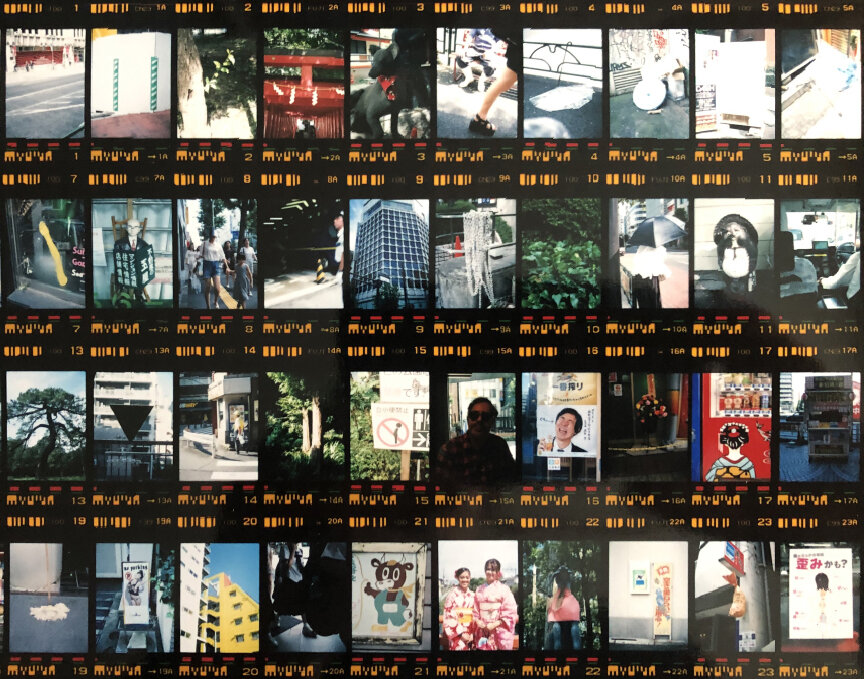Shooting film is always a roll of the dice. You don’t know what you’ve captured on film until days (or weeks) later, after you’ve gotten your film processed. During my recent trip to Japan, I bought an old Olympus Pen EE-S, a half-frame film camera, on the first day of the trip. To those of you who are unfamiliar, a half-frame camera exposes only half of the usual 35mm film frame. Instead of 36 frames, the camera yields a whopping 72 photos per roll. An added bonus (or challenge) to using this camera is that the images are formatted vertically (as you can see on the contact sheet above.) So when I bought the camera, I had to trust that it was functioning properly. I knew I wasn’t going to see the results of this experience until I returned back home… so if the camera wasn’t working properly, I’d be shit out of luck, and there would be no opportunity to re-shoot the photos.
Here’s another curveball I needed to deal with. I wanted the film not only developed, but printed as contact sheets. Not a digitally layout of all the frame scans, but an actual, darkroom printed, contact sheet. I’m betting most of you reading this have never gotten a real contact sheet made. You lay the strips of film on a sheet of photo paper, expose it under the light of an enlarger, and then run that paper through photo chemistry. The result is what you see above. A nice way to judge all the photos from one roll of film. I actually had to ship my film to a lab in New York City to get this done (full disclosure, I also had them scan the film so I could have digital version for social media, etc.)
When the package finally arrived this week, I was relieved and excited to see the results. First off, the camera worked like a charm. Sure there were a couple of dud frames, mostly due to my bad skills at framing a moving subject, or not paying attention to the zone focus adjuster on the front of the lens. Otherwise though, the exposures look pretty much spot on. The exposure is controlled by a selenium meter on the front of the lens (see image below) which then adjusts the shutter speed to give a properly exposed image. The camera was made in the 1960s, so I was dubious whether it would function properly. If it didn’t work, I paid for an expensive, albeit very attractive, paperweight. Thankfully, my fears were not realized, and I have two rolls of memories from my trip.
This little gem of a camera… small, lightweight, and easy to use will most likely be in my pocket no matter what or where I decide to shoot next. It will be a unique addition to any other digital or film camera I might decide to use.
The wonderful Olympus Pen EE-S half-frame film camera. A thing of beauty and simplicity.

